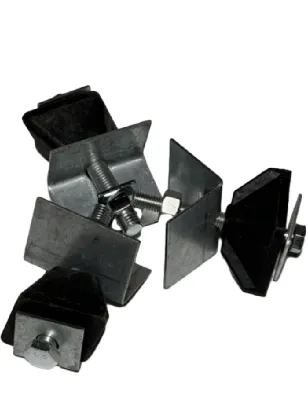- No. 9, Xingyuan South Street, Dongwaihuan Road, Zaoqiang County, Hengshui, Hebei, China
- admin@zjcomposites.com
- +86 15097380338
- Welcome to visit our website!
FRP Stair Solutions - Durable and Lightweight Fiberglass Reinforced Plastic Stairs
Exploring FRP Stair Solutions Innovation in Design and Durability
In recent years, the use of Fiber Reinforced Polymer (FRP) in various construction applications has gained immense popularity, particularly in the design and construction of stairs. FRP stairs present a myriad of advantages, helping to streamline construction processes while ensuring safety, durability, and aesthetic appeal.
What is FRP?
Fiber Reinforced Polymer is a composite material made up of a polymer matrix reinforced with fibers, such as glass, carbon, or aramid. This combination results in a lightweight yet robust material that is both corrosion-resistant and long-lasting. With these key characteristics, FRP has emerged as an invaluable resource for various construction projects, including industrial applications, pedestrian bridges, and, notably, stair systems.
Advantages of FRP Stairs
1. Durability One of the primary benefits of FRP stairs is their exceptional durability. Unlike traditional materials such as wood or steel, which can corrode or decay over time, FRP is resistant to moisture, chemicals, and UV radiation. This makes FRP stairs particularly suitable for environments that experience harsh weather conditions or exposure to aggressive substances, such as chemical plants or marine settings.
2. Lightweight FRP's lightweight nature simplifies transportation and installation processes. This not only reduces labor costs but also minimizes the need for heavy lifting equipment. As a result, FRP stairs can be quickly installed, allowing for faster project completion without compromising quality.
frp stair

3. Design Flexibility The versatility of FRP materials enables architects and designers to create aesthetically pleasing stair solutions that meet the specific needs of various applications. FRP can be molded into nearly any shape, allowing for unique designs that can complement the surrounding architecture. Additionally, the availability of different colors and finishes enhances the visual appeal, making FRP stairs an attractive option for residential and commercial projects alike.
4. Safety Features Safety is a paramount concern in any construction project, and FRP stairs are designed with this in mind. The material can be manufactured with slip-resistant surfaces, ensuring enhanced grip even in wet or inclement conditions. Furthermore, the non-conductive properties of FRP make it an ideal choice for electrical installations, significantly reducing the risk of accidents.
Applications of FRP Stairs
FRP stairs are utilized in a wide range of applications. They are commonly found in industrial settings such as factories and chemical processing plants due to their resistance to corrosive substances. In commercial environments, they can be seen in shopping malls, airports, and office buildings where modern design aesthetics are desired. Furthermore, FRP stairs are gaining traction in residential projects, offering homeowners a stylish and durable option for both indoor and outdoor installations.
Conclusion
As the demand for innovative and sustainable construction materials continues to rise, FRP stairs stand out as a leading choice for both commercial and residential applications. Combining durability, design flexibility, and safety, FRP stair solutions not only enhance the functionality of spaces but also contribute to the overall aesthetic appeal. Embracing FRP technology in stair design marks a significant step forward for builders and architects committed to innovation and excellence in construction.
-
GRP Structures: The Future of Lightweight, High-Performance EngineeringNewsJun.20,2025
-
FRP Water Tank: High-Performance Storage for Corrosive and Clean Water SystemsNewsJun.20,2025
-
FRP Square Tube: The New Industry Standard for Chemical and Structural ApplicationsNewsJun.20,2025
-
FRP Pultruded Profiles: The Ultimate Choice for Lightweight Structural StrengthNewsJun.20,2025
-
FRP Handrails: The Safer, Smarter, and Stronger Choice for Modern InfrastructureNewsJun.20,2025
-
FRP Grating: The Smart Solution for Durable, Lightweight Industrial FlooringNewsJun.20,2025
-
Why Choose a Galvanized Water Tank for Your Storage NeedsNewsMay.21,2025
